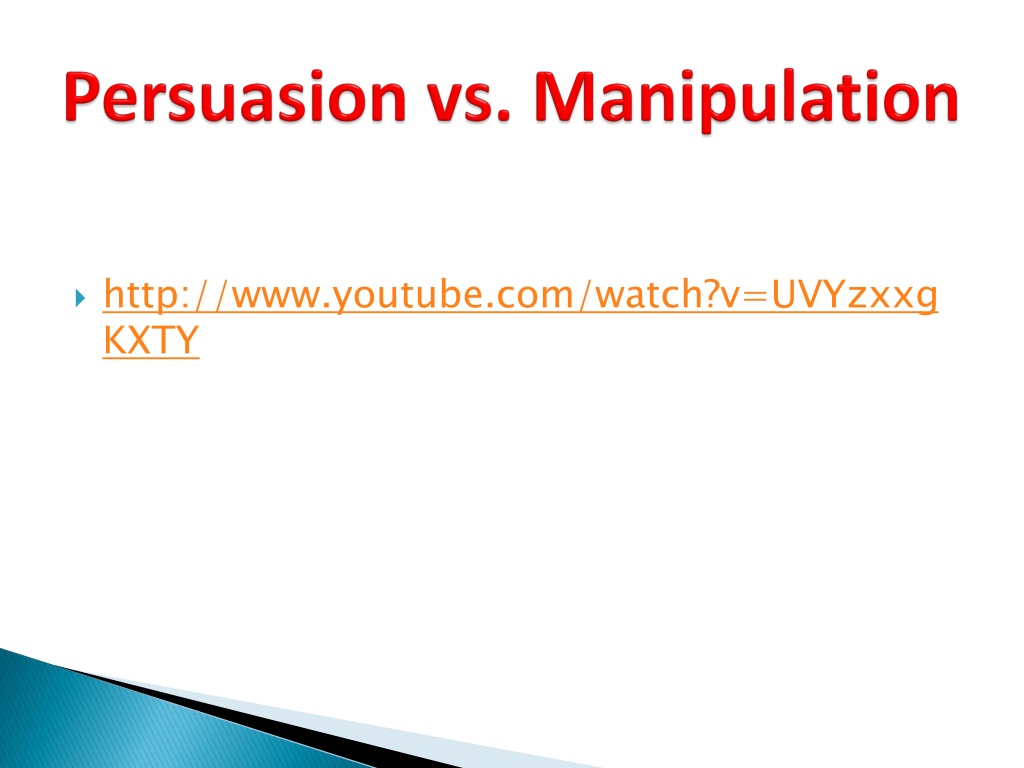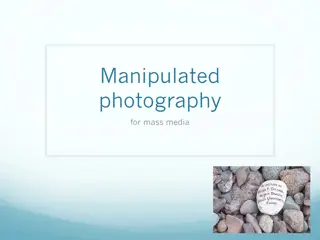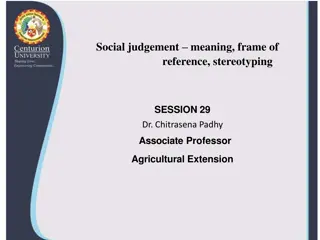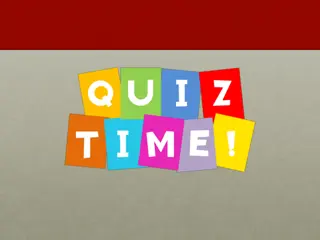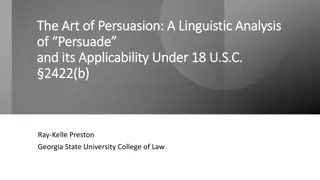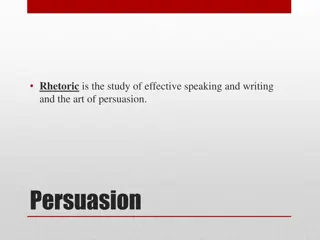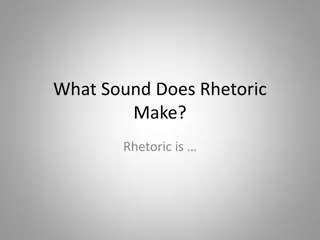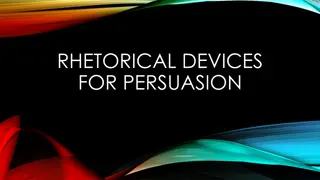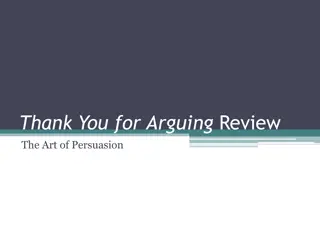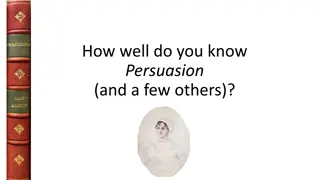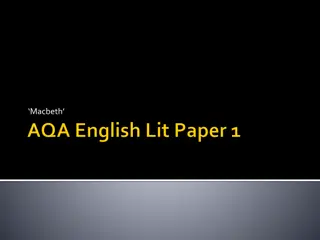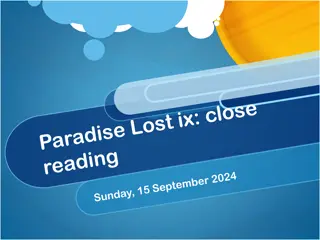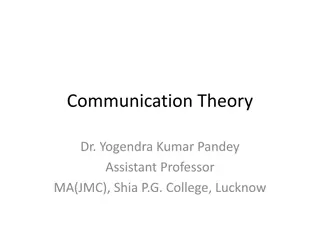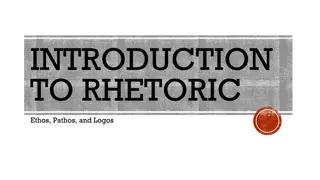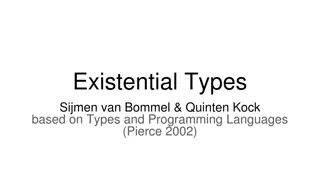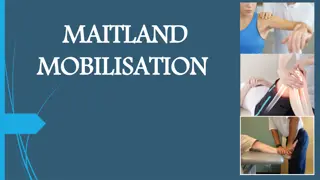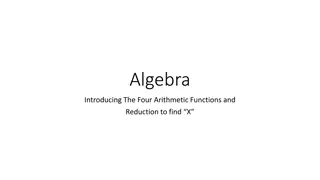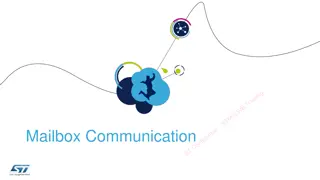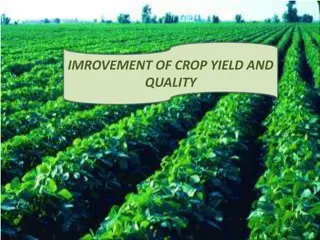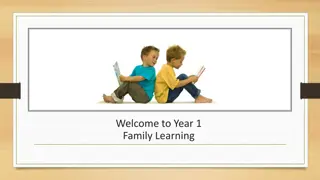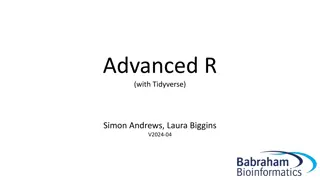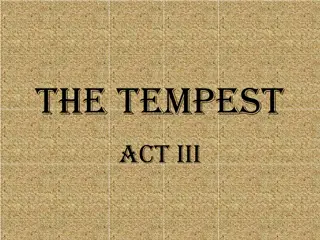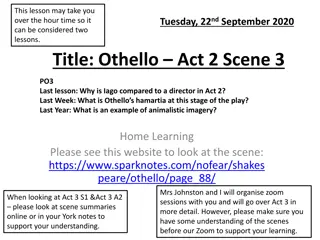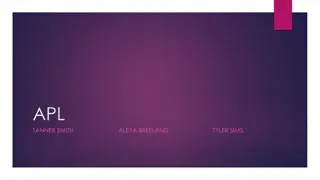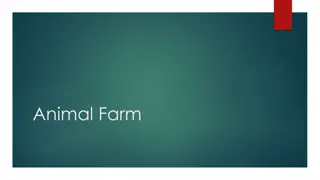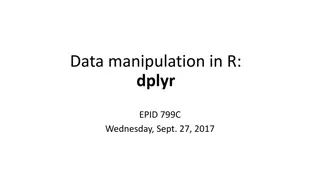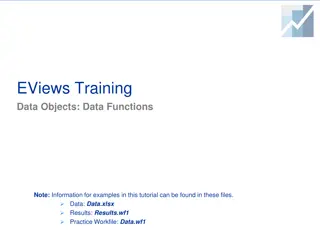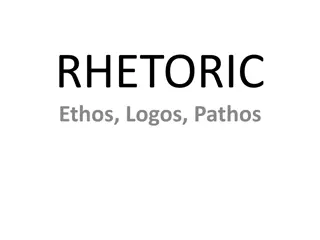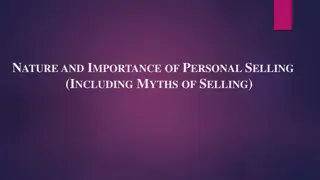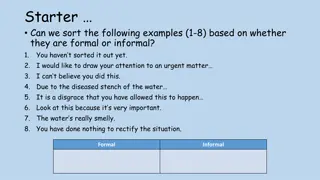Understanding Persuasion and Manipulation in Communication
Explore the concepts of persuasion and manipulation in communication, analyzing examples and their effects on decision-making. Learn how authors persuade readers, evaluate arguments, identify fallacies, discern tone, and understand the Rhetorical Triangle. Discover the role of subject evaluation and audience consideration in effective communication strategies.
Download Presentation

Please find below an Image/Link to download the presentation.
The content on the website is provided AS IS for your information and personal use only. It may not be sold, licensed, or shared on other websites without obtaining consent from the author. Download presentation by click this link. If you encounter any issues during the download, it is possible that the publisher has removed the file from their server.
E N D
Presentation Transcript
Persuasion Manipulation per suade to prevail on (a person) to do something, as by advising or urging: We could not persuade him to wait. to induce to believe by appealing to reason or understanding; convince: to persuade the judge of the prisoner's innocence per suade ma nip u late to manage or influence skillfully, esp. in an unfair manner: to manipulate people's feelings. to adapt or change (accounts, figures, etc.) to suit one's purpose or advantage. ma nip u late http://dictionary.reference. com
What examples of persuasion do you see? How is one person manipulating the other? How is the persuasion and manipulation affecting choice?
How do authors persuade us of their point of view? How do we evaluate the quality of an argument? How do we spot logical fallacies? How do we discern tone and how does the correct reading of tone change our understanding of the author s purpose?
Its all around us in conversations, in movies, in advertisements and books Aristotle observing in any given case the available means of persuasion. Aristotle: Rhetoric may be defined as the faculty of Rhetoric effectively and usually with a certain goal in mind. Resources include: word choice, any and all figures of speech, and structure of composition. Rhetoric is the art of language of using its resources The Rhetorical Triangle: Subject, Audience, Speaker s Persona
The Rhetorical Triangle The Rhetorical Triangle Speaker Speaker Audience Audience Subject Subject
When considering the subject, the writer/speaker evaluates what he/she already knows and needs to know, investigates perspectives, and determines the kinds of evidence or proofs that seem most useful.
When considering the audience, the writer or speaker speculates about the reader s expectations, knowledge and disposition with regard to the subject.
Speakers/writers use their experiences and observations Use who they are, what they know and feel, and what they ve seen and done to find their attitudes toward a subject and their understanding of a reader. How we, the reader, characterize the speaker based upon their language. Persona or she writes or speaks - voice Persona the character the speaker creates as he voice
There are two other elements of the rhetorical situation - the context in which writing or speaking occurs and the emerging aim or purpose that underlies many of the writer s decisions. Rhetoric is situational it has context occasion or the time and place it was written or spoken. Rhetoric has a purpose or writer wants to achieve. context the purpose a goal that the speaker
Logos Logos Writers appeal to a reader s sense of logos they offer clear, reasonable premises and proofs when they develop ideas with appropriate details these details and proofs help the readers to follow the progression of ideas. logos when clear, reasonable premises and proofs, details; Writers use logos to inform speaker s decisions and readers responses
Ethos Writers use ethos when they demonstrate that they are credible, good knowledgeable Ethos credible, good- -willed, and knowledgeable about their subjects willed, and Writers connect their thinking to reader s own ethical or moral beliefs in that you, the reader, believe and trust this writer to be credible, good- willed, and knowledgeable, and want to continue listening.
Pathos When writers draw on the emotions of readers, and highlight them, they use pathos. Use of personal stories provoke readers sympathetic Figurative language emotional connections subject. Pathos draw on the emotions and interests personal stories or observations to sympathetic reaction. Figurative language is often used to heighten the emotional connections readers make to the
"Fans, for the past two weeks you have been reading about the bad break I got. Yet today I consider myself the luckiest man on the face of this earth. I have been in ballparks for seventeen years and have never received anything but kindness and encouragement from you fans. "Look at these grand men. Which of you wouldn't consider it the highlight of his career just to associate with them for even one day? Sure, I'm lucky. Who wouldn't consider it an honor to have known Jacob Ruppert? Also, the builder of baseball's greatest empire, Ed Barrow? To have spent six years with that wonderful little fellow, Miller Huggins? Then to have spent the next nine years with that outstanding leader, that smart student of psychology, the best manager in baseball today, Joe McCarthy? Sure, I'm lucky. "When the New York Giants, a team you would give your right arm to beat, and vice versa, sends you a gift - that's something. When everybody down to the groundskeepers and those boys in white coats remember you with trophies - that's something. When you have a wonderful mother-in-law who takes sides with you in squabbles with her own daughter - that's something. When you have a father and a mother who work all their lives so you can have an education and build your body - it's a blessing. When you have a wife who has been a tower of strength and shown more courage than you dreamed existed - that's the finest I know. "So I close in saying that I may have had a tough break, but I have an awful lot to live for."
Context & Purpose: Speaker, Audience, Subject: http://www.youtube.com/watch?v=qswig8dcEAY The Appeals: Logos, Pathos, Ethos:
The goal of an argument is to strengthen or weaken rather than overturn one s convictions/thoughts/beliefs An argument is o a way of establishing and testing out ideas o an activity that helps us form our beliefs and determine our actions o a process of discussion and deliberation rather than a contest of opposites
Rhetoric is the way to connect intentions with responses, the way to reconcile readers and writers. Investigating how readers perceive intentions exposes where and how communication happens or is lost. Intention is sometimes embodied in a thesis statement but intention is carried out throughout a piece and it often changes.
S Speaker O Occasion A Audience P Purpose S Subject T Tone An acronym for a series of questions that students must first ask themselves, and then answer, as they begin to plan their essays
Who The voice that tells the story Who are you? What details will you reveal? Why is it important that the audience know who you are? Who is the Speaker? What o The time and place of the piece: the context that prompted the writing How does your knowledge of the larger occasion and the immediate occasion affect what you are writing about? What is the Occasion? o Larger Occasion emotions that swirl around a broad issue the bigger picture o Immediate Occasion writer s attention and triggers a response. Larger Occasion an environment of ideas, attitudes, and Immediate Occasion an event or situation that catches the Who o Who is the Audience? The group of readers to whom this piece is directed What are the characteristics of this group? How are they related to you? Why are you addressing them?
What oThe reason behind the text What do I want my audience to think or do as a result of reading my text? Explain yourself what you hope to accomplish by this expression of opinion. How would you like your audience to respond? What is the Purpose? What o Students should be able to state the focus on the intended task What are you talking about? What is the Subject? What o The attitude of the author How will your attitude enhance the effectiveness of your piece? What is the Tone?
Students must learn to convey tone in their: Diction Diction choice of words Syntax Syntax sentence construction Figurative Language metaphors, similes, and other figurative language (involves rhetorical device) Figurative Language imagery,
Denotation: the explicit or direct meaning of a word Connotation: the associated or secondary meaning of a word
Exigence (a need or demand) Jolliffe s Rhetorical Framework Design Rhetorical Situation Rhetorical Situation Audience Purpose Logos Appeals Appeals Ethos Pathos Organization/Structure/Form Figurative Language Diction Syntax Imagery Surface Features Surface Features
Imagery create vivid images; based within the five senses Imagery those words, those details that Metaphor objects Metaphor- comparison of two unlike Simile using like or as Simile comparison of two unlike objects
Alliteration sounds (consonance = repetition of consonants; assonance = repetition Alliteration repetition of initial consonant (consonance = repetition of consonants; assonance = repetition of vowels) of vowels) While I nodded nearly napping, -Edgar Allen Poe, The Raven Allusion something in previous literature and history The girl's love of diamonds was her Achilles heel. Allusion a reference, explicit or implicit, to http://www.buzzle.com/articles/allusion-examples.html
Anaphora clauses in successive lines, stanzas, or paragraphs. It s the story of students who sat where you sit 250 years ago, and went on to wage a revolution and they founded this nation. Young people. Students who sat where you sit 75 years ago who overcame a Depression and won a world war; who fought for civil rights and put a man on the moon. Students who sat where you sit 20 years ago who founded Google and Twitter and Facebook Anaphora the repetition of words, phrases, or -Barack Obama, National Address to America s School Children, 2009
Counterargument opposing views; a way to appeal to logos Counterargument to anticipate objections or Concede (concede) that an opposing argument may be true, but then you Refute the argument. Concede in acknowledging a counterargument you agree Refute to prove to be false - the validity of all or part of This concession or refutation actually strengthens your argument; it appeals to logos by demonstrating that you have considered your subject carefully before making your argument.
Parallel Structure means using the same pattern Parallel Structure of words to show that two or more ideas have the same level of importance. The usual way: to join parallel phrases/clauses with the use of coordinating conjunctions and or or Mary likes hiking, swimming, and bicycling -The Owl, Purdue University
Rhetorical Question a question that is not intended to be answered Rhetorical Question a statement constructed as Isn t it a bit unnerving that doctors call what they do practice ? George Carlin, yahoo.com
The Imperative of the verb The Imperative the command form Listen! Listen! Go! Go! Wait! Wait!
Analogy simile in which an explicit comparison is made between two things (events, people, etc.) for the purpose of furthering a line of reason or drawing an inference In other words to something familiar Analogy a kind of extended metaphor or long In other words an analogy relates difficult issues "Remember this, ladies and gentlemen. It's an old phrase, basically anonymous -- that politicians are a lot like diapers: They should be changed frequently and for the same reason. Keep that in mind next time you vote. Good night. -- delivered by Robin Williams (from the movie Man of the Year)
If If- -then clause the potential consequences of certain actions express potentially negative consequences then clause a device used to emphasize the potential consequences of certain actions - - usually phrased as a warning or to express potentially negative consequences a device used to emphasize usually phrased as a warning or to For example: If you do not clean your room immediately , then you will not be going out this weekend. For example: If you do not clean your room immediately , then you will not be going out this weekend.
Onomatopoeia: 1. the formation of words whose sound is imitative of the sound of the noise or action designated, such as hiss, buzz, and bang 2. the use of such words for poetic or rhetorical effect * From the Greek: to make words http://dictionary.reference.com
Hyperbole/exaggeration 1. obvious and intentional exaggeration. 2. an extravagant statement or figure of speech not intended to be taken literally, as to wait an eternity. http://dictionary.reference.com
Understatement: the act or an instance of stating something in restrained terms, or as less than it is A form of irony in which something is intentionally represented as less than it is: Hank Aaron was a pretty good ball player. http://dictionary.reference.com
To show or indicate beforehand; prefigure: Political upheavals foreshadowed war. http://dictionary.reference.com
Chronological: The storys key events are presented as they occur A flashback is a narrative technique that allows a writer to present past events during current events, in order to provide background for the current narration. By giving material that occurred prior to the present event, the writer provides the reader with insight into a character's motivation and or background to a conflict. This is done by various methods, narration, dream sequences, and memories (Canada). http://www.courses.vcu.edu/ENG-jeh/BeginningReporting/Writing/storystructure.htm http://www.uncp.edu/home/canada/work/allam/general/glossary.htm
1. a position from which someone or something is observed (the manner something is considered or evaluated) - from the point of view of a doctor. 2. an opinion, attitude, or judgment - He refuses to change his point of view in the matter. 3. the position of the narrator in relation to the story - (examples: first person, third person, limited, omniscient).
http://www.uncp.edu/home/canada/work/allam/general/glossary.htmhttp://www.uncp.edu/home/canada/work/allam/general/glossary.htm http://academic.brooklyn.cuny.edu/english/melani/pv.html First Person: the main character conveys the incidents he encounters, as well as giving the reader insight into himself as he reveals his thoughts, feelings, and intentions (Canada). Objective Third Person: a nonparticipant serves as the narrator and has no insight into the characters' minds. The narrator presents the events using the pronouns he, it, they, and reveals no inner thoughts of the characters (Canada). Third Person Omniscient: all knowing narrator [who] moves from one character to another as necessary to provide those characters respective motivations and emotions (Canada). Third Person Limited: the narrator focuses on only a few (often only one) characters, sharing thoughts and feelings of that one or those few characters.
Verbal: Situational: Dramatic:
Verbal: Sarcasm; you say one thing but mean the opposite. The irony of her reply, How nice! when I said I had to work all weekend. An outcome of events contrary to what was, or might have been, expected. (the opposite of what you think is going to happen). The reader/audience knows something that a character does not know. Situational: Dramatic:
An apparent contradiction that is actually true. Example: Less is more.
A character that serves by contrast to highlight or emphasize opposing traits in another character. (Both characters may share some similar traits.) A character that serves by contrast to highlight or emphasize opposing traits in another character. (Both characters may share some similar traits.) http://web.cn.edu/kwheeler/lit_terms_f.html
Inciting Incident: Rising Action: Climax: Falling Action: Resolution: Denouement:
Gustav Freytag was a Nineteenth Century German novelist who saw common patterns in the plots of stories and novels and developed a diagram to analyze them. He diagrammed a story's plot using a pyramid like the one shown here: http://oak.cats.ohiou.edu/~hartleyg/250/freytag.html
Freytag's Pyramid Freytag's Pyramid 1. Exposition: setting the scene. The writer introduces the characters and setting, providing description and background. 2. Inciting Incident: something happens to begin the action. A single event usually signals the beginning of the main conflict. The inciting incident is sometimes called 'the complication'. 3. Rising Action: the story builds and gets more exciting. 4. Climax: the moment of greatest tension in a story. This is often the most exciting event. It is the event that the rising action builds up to and that the falling action follows. http://oak.cats.ohiou.edu/~hartleyg/250/freytag.html
5. Falling Action: events happen as a result of the climax and we know that the story will soon end. 6. Resolution: the character solves the main problem/conflict or someone solves it for him or her. 7. D nouement: (a French term, pronounced: day-noo-moh) the ending. At this point, any remaining secrets, questions or mysteries which remain after the resolution are solved by the characters or explained by the author. Sometimes the author leaves us to think about the theme or future possibilities for the characters. You can think of the d nouement as the opposite of the exposition: instead of getting ready to tell us the story by introducing the setting and characters, the author ends the story with a final explanation of what actually happened and how the characters think or feel about the events. It is often very closely tied to the resolution. http://oak.cats.ohiou.edu/~hartleyg/250/freytag.html
Internal: in literature - a struggle which takes place in the character's mind and through which the character reaches a new understanding or dynamic change. http://dictionary.reference.com/browse/internal+conflict
External: in literature - a struggle between a character and some outside force Character vs. Character Character vs. Nature Character vs. Society http://dictionary.reference.com/browse/external+conflict
A kind of writing that ridicules human weakness, vice, or folly in order to bring about social reform. Examples include most political cartoons and many sections of The Simpsons.
